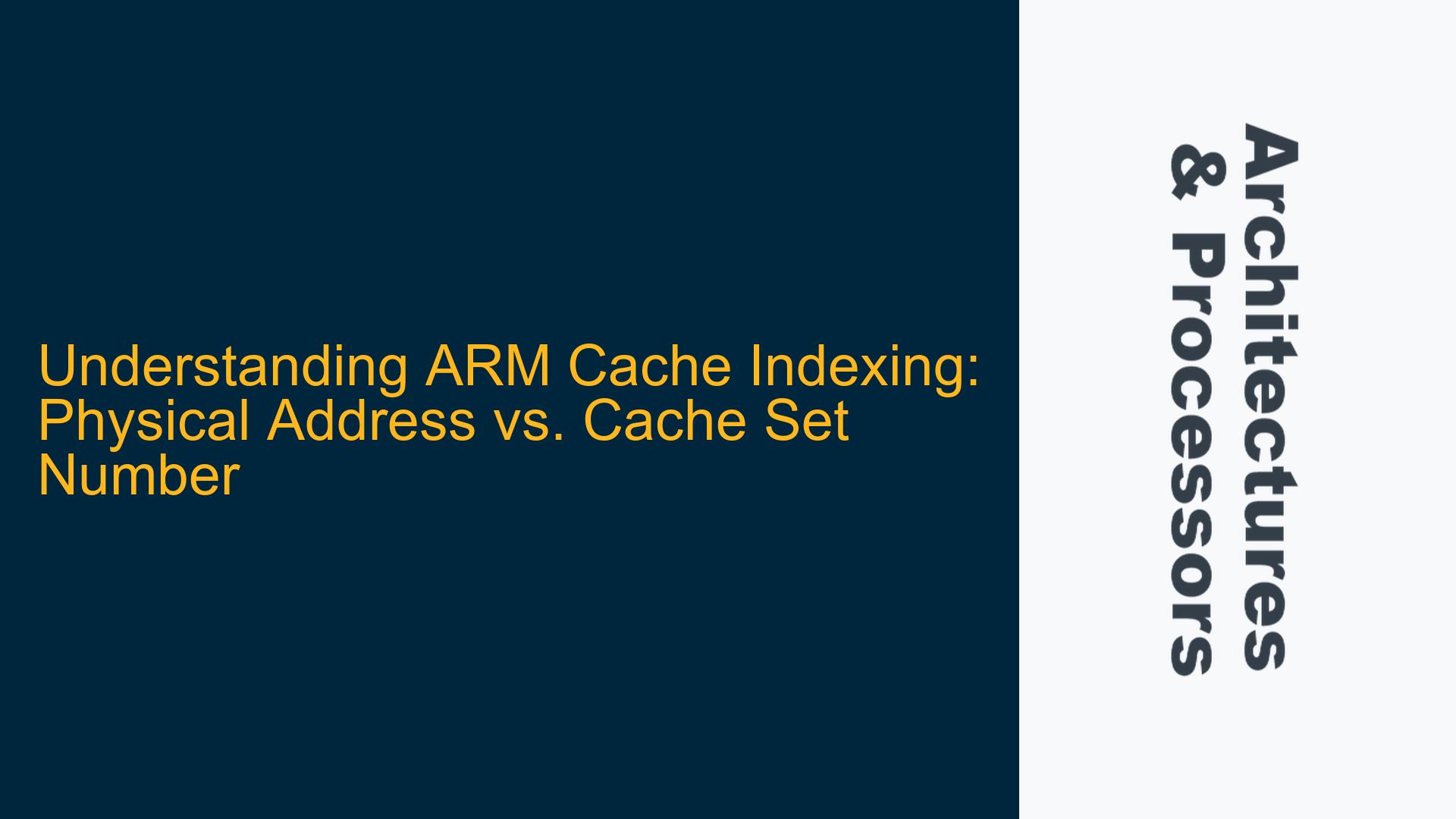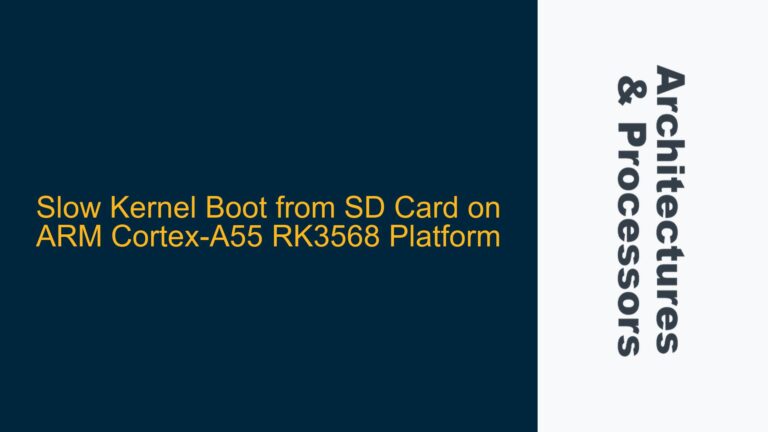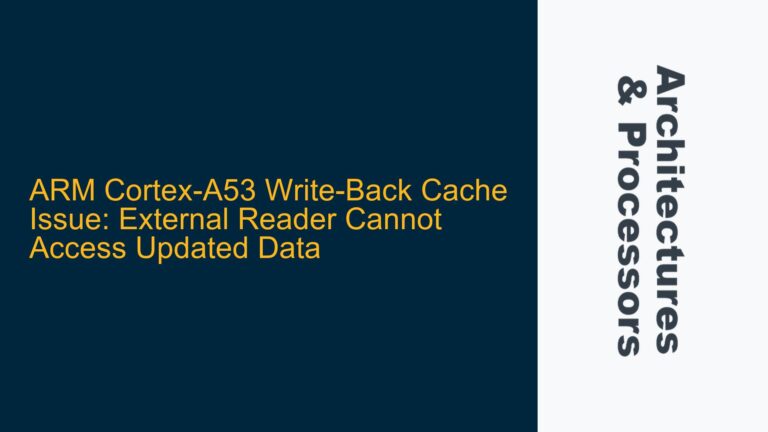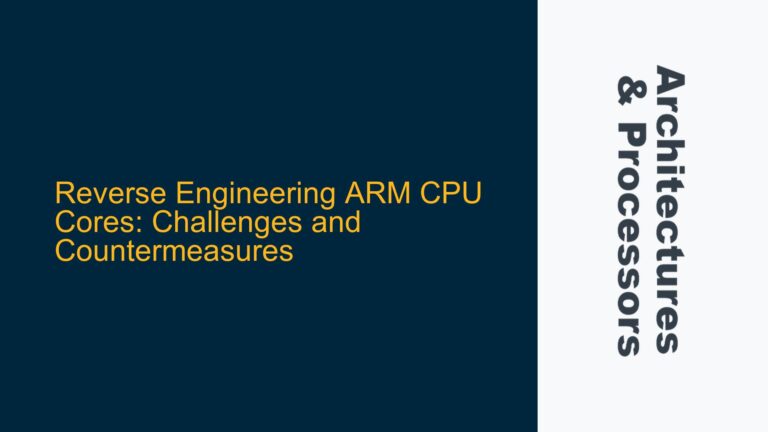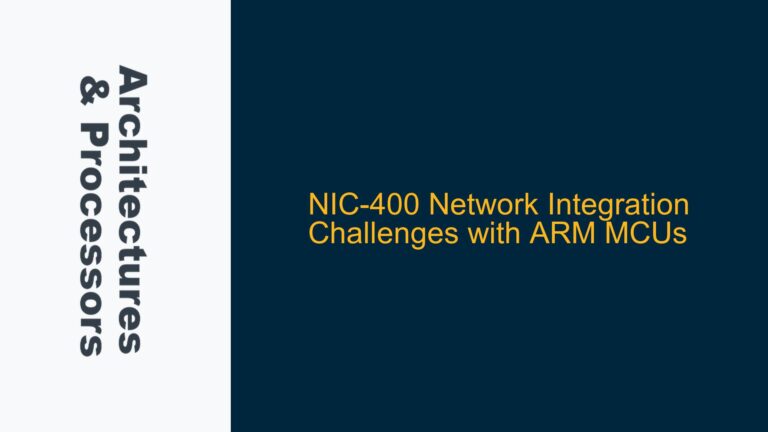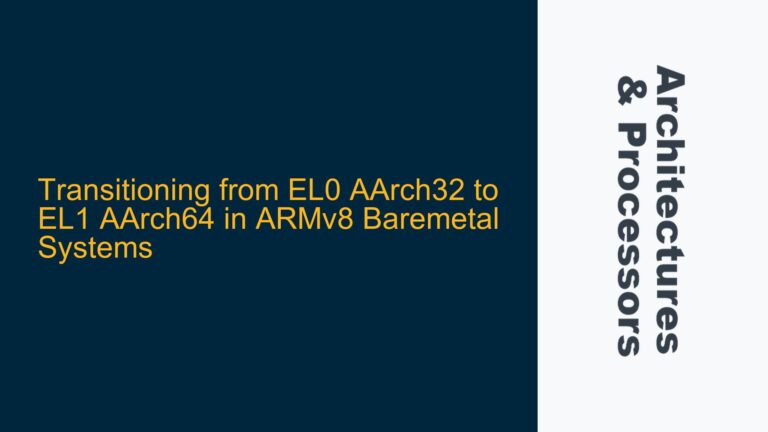ARM Cortex Cache Indexing Mechanism and Physical Address Discrepancy
In ARM architectures, particularly in ARMv8-A and ARMv9-A, the relationship between Physical Addresses (PA) and cache set numbers is a nuanced topic that often leads to confusion. The cache indexing mechanism is designed to optimize memory access patterns, reduce contention, and improve overall system performance. However, the statement in the X925 Technical Reference Manual (TRM) that "there is no direct relationship between the Physical Address (PA) and set number" challenges the conventional understanding that cache set numbers are directly derived from the index bits of the Physical Address.
To understand this discrepancy, it is essential to delve into the architecture of ARM caches, particularly the Level 1 (L1), Level 2 (L2), and Level 3 (L3) caches. ARM caches are typically set-associative, meaning that the cache is divided into a number of sets, each containing a fixed number of ways. The set number is usually determined by a subset of the Physical Address bits, known as the index bits. For example, in a 4096-set L2 cache, one might expect the set number to be derived from PA[17:6], as these 12 bits can address 4096 unique sets.
However, the X925 TRM indicates that this direct mapping is not always the case. The cache indexing mechanism in ARM processors can be more complex, involving additional factors such as cache coloring, hash functions, or other architectural optimizations that decouple the Physical Address from the cache set number. This complexity is introduced to avoid cache thrashing, where multiple memory addresses map to the same cache set, leading to frequent evictions and reduced performance.
The ARM architecture allows for flexibility in cache indexing to accommodate different use cases and performance requirements. For instance, in some implementations, the cache index might be determined by a combination of Physical Address bits and additional bits derived from other sources, such as the Address Space Identifier (ASID) or Virtual Machine Identifier (VMID). This flexibility ensures that the cache can efficiently handle a wide range of workloads, from single-threaded applications to complex multi-threaded, multi-core, and multi-virtual machine environments.
Cache Indexing Complexity: Hash Functions and Cache Coloring
The absence of a direct relationship between Physical Addresses and cache set numbers can be attributed to several factors, including the use of hash functions and cache coloring techniques. Hash functions are mathematical algorithms that take an input (in this case, the Physical Address) and produce a fixed-size output (the cache set number). The purpose of using a hash function in cache indexing is to distribute memory accesses more evenly across the cache sets, reducing the likelihood of cache conflicts and improving overall cache utilization.
Cache coloring is another technique used to optimize cache performance. In this approach, the cache is divided into multiple "colors," each representing a subset of the cache sets. The Physical Address is then mapped to a specific color, which in turn determines the cache set number. This technique is particularly useful in multi-core systems, where different cores might access different regions of memory. By assigning different colors to different cores, cache coloring can reduce contention and improve cache performance.
The use of hash functions and cache coloring introduces an additional layer of complexity to the cache indexing mechanism. Instead of a straightforward mapping from Physical Address bits to cache set numbers, the cache index is determined by a combination of Physical Address bits, hash function outputs, and cache coloring assignments. This complexity is necessary to achieve the desired performance characteristics, but it also means that the relationship between Physical Addresses and cache set numbers is no longer direct or easily predictable.
Implementing Cache Maintenance Operations Without Direct PA-to-Set Mapping
Given the complexity of cache indexing in ARM architectures, performing cache maintenance operations, such as flushing or invalidating the cache, requires a different approach. The X925 TRM explicitly states that targeted operations assuming a direct relationship between Physical Addresses and cache set numbers are not supported. Instead, cache maintenance operations must be performed over the entire range of sets and ways described in the Cache Size Identification Register (CCSIDR_EL1) for the specific cache level.
The CCSIDR_EL1 register provides detailed information about the cache configuration, including the number of sets, ways, and cache line size. To flush or invalidate the entire cache, software must iterate over all sets and ways, performing the necessary maintenance operations for each combination. This approach ensures that all cache entries are properly handled, regardless of the underlying cache indexing mechanism.
For example, to flush the entire L2 cache, software would read the CCSIDR_EL1 register to determine the number of sets and ways. It would then iterate over each set and way, issuing a Data Cache Clean and Invalidate by Set/Way (DC CISW) instruction for each combination. This process ensures that all cache entries are flushed, even if the cache indexing mechanism does not provide a direct mapping from Physical Addresses to cache set numbers.
In addition to set and way maintenance operations, ARM architectures provide other cache maintenance instructions that can be used to manage cache coherency and performance. For example, the Data Synchronization Barrier (DSB) instruction ensures that all previous memory accesses are completed before proceeding, while the Instruction Synchronization Barrier (ISB) instruction ensures that all previous instructions are completed before fetching new instructions. These instructions are essential for maintaining cache coherency and ensuring correct program execution in multi-core and multi-threaded environments.
In conclusion, the relationship between Physical Addresses and cache set numbers in ARM architectures is more complex than a simple direct mapping. The use of hash functions, cache coloring, and other architectural optimizations means that cache indices are determined by a combination of factors, rather than just the Physical Address bits. This complexity is necessary to achieve optimal cache performance, but it also requires a different approach to cache maintenance operations. By understanding the underlying mechanisms and using the appropriate cache maintenance instructions, software can effectively manage cache coherency and performance in ARM-based systems.
